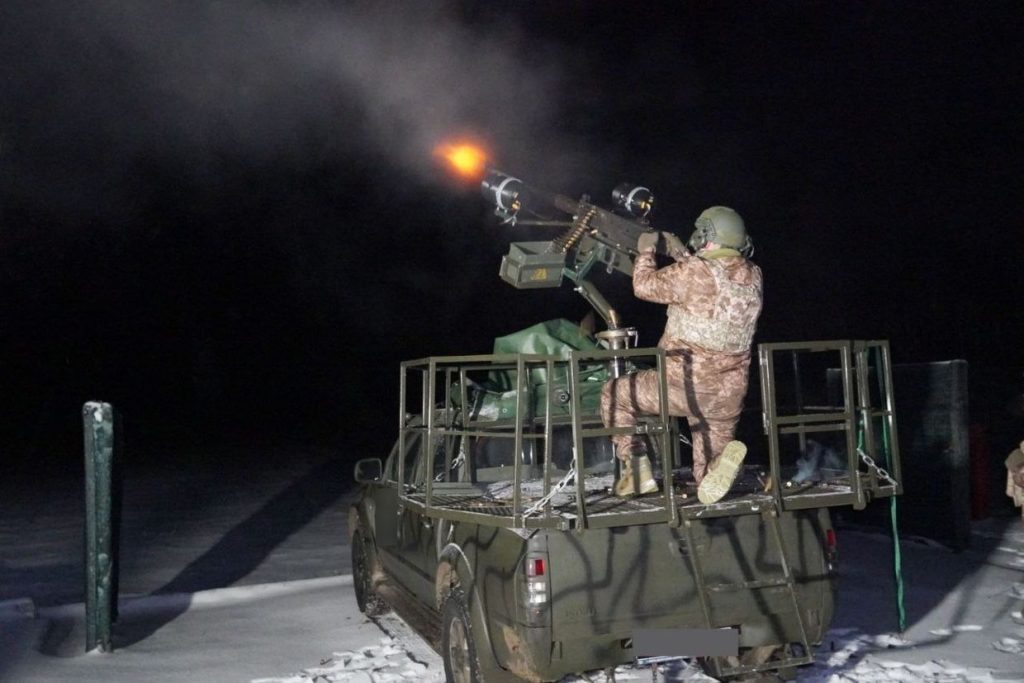The Ukrainian Air Force reported that they had destroyed 17 Shahed-type drones and one Kh-59 guided cruise missile launched by Russia overnight. These attacks originated from various locations, including occupied Crimea, Kursk Oblast, and a military base in Yeysk in Russia’s Krasnodar Krai region. One of the drones damaged a logistic transport facility and a gas station in Odesa Oblast. However, there were no casualties or injuries reported as a result of these attacks. The drones were intercepted over several regions in Ukraine, and mobile fire groups of the Ukrainian Air Force were involved in repelling the air attacks. This highlights the ongoing daily occurrence of drone attacks in Ukraine that affect various regions across the country.
The Russian forces continue to attack civilian areas far from the front line, with recent intense bombardments targeting energy infrastructure, likely in an attempt to disrupt Ukraine’s grid. Civilians living in front-line regions in the country’s east and south as well as those living close to the Russian border in the north remain the most vulnerable. In a recent series of developments on April 6-7, the Prosecutor General’s Office reported that Russian soldiers killed three Ukrainian prisoners of war. There were also reports that former US President Donald Trump allegedly wants Ukraine to cede Crimea and Donbas to Russia. Additionally, Russia lost seven aircraft in Ukraine’s April 5 attack on an air base, according to sources. Ukrainian President Zelensky stated that Kharkiv is prepared for a potential offensive, showcasing the ongoing tensions and threats faced by Ukraine.
The consistent drone attacks and air strikes by Russian forces pose a significant threat to the security and stability of Ukraine. These attacks are part of a broader conflict that has been ongoing for several years, with various regions of Ukraine facing the brunt of the aggression. The involvement of mobile fire groups of the Ukrainian Air Force indicates the readiness of Ukraine to defend itself against such attacks. The recent targeting of civilian infrastructure and the reported casualties among Ukrainian POWs highlight the humanitarian aspect of the conflict and the need for international support and intervention to address the situation.
The situation in Ukraine remains fluid and volatile, with both military and diplomatic efforts being undertaken to address the ongoing conflict. The international community continues to monitor the developments in Ukraine closely, with various countries expressing support for Ukraine and condemning the aggression by Russian forces. The recent loss of Russian aircraft in Ukraine highlights the risks and consequences of military escalation in the region. There is a pressing need for dialogue and negotiations to de-escalate the conflict and find a peaceful resolution to the crisis. The humanitarian impact of the conflict, including civilian casualties and infrastructure damage, underscores the urgency of reaching a sustainable peace agreement.
The ongoing conflict in Ukraine has broader implications for regional security and stability, with the potential to escalate into a larger regional or even global conflict. The involvement of multiple actors and the complex nature of the conflict make it challenging to find a resolution. The role of independent journalism in providing accurate and timely information about the situation in Ukraine is crucial for understanding the complexities of the conflict and highlighting the impact on civilians. Supporting independent journalism in Ukraine is essential for shedding light on the realities of the conflict and advocating for peace and justice in the region. By joining the fight to support independent journalism in Ukraine, individuals can contribute to efforts to promote transparency, accountability, and human rights in the midst of conflict and crisis.


